
Neurological Function


Abstract
Objective: Evaluating countermeasures designed to reduce the impact of microgravity exposure on astronaut performance requires the development of effective methods of assessing changes to sensorimotor function in 1g analog systems. In this study, somatosensation at the ankle and fingers, lower leg muscle activity and visuomotor control were assessed using a full body loading and acute unloading model to simulate microgravity. It was hypothesized that the function of the hands and eyes are not constrained to ‘weight bearing’ postures for optimal function and would not differ between the loaded and acute unloaded conditions, whereas lower leg muscle activity and ankle somatosensation would be reduced in the acute unloaded condition. Somatosensation was recorded using the Active Movement Extent Discrimination Apparatus (AMEDA) protocol where participants were required to make an absolute judgment of joint position sense. A score closer to 1.0 demonstrates higher accuracy. Lower leg muscle activity was recorded using electromyography of major lower leg musculature to observe peak muscle activity and duration of contraction. The King Devick infrared eye tracking test was used to asses visuomotor control by monitoring saccade velocity and fixation time. In acute unloading, it was found that ankle somatosensation had decreased accuracy (loaded 0.68, unloaded 0.66, p = 0.045) while finger somatosensation improved (loaded 0.77, unloaded 0.79, p = 0.006). When acutely unloaded, peak lower leg muscle activation reduced ( > 27%) and total contraction time increased (2.02 × longer) compared to loading. Visuomotor assessment results did not vary between the loaded and acute unloaded postures, however the underlying techniques used by the participant to complete the task (saccade velocity and fixations time) did increase in acute unloaded conditions.
Significance: This research provides an insight to how to the human body responds immediately to acute changes of gravitational load direction. It provides insight to the acute affects’ astronauts may encounter when in microgravity.
Methods: The King Devick (KD) infrared eye tracking test was used to assess visual neuromotor control. The KD test is a measure of eye movement control, concentration, and cerebral cortex processing (Davies et al., 2012; Galetta et al., 2016), and has been shown to be sensitive to changes in visual function following concussion and sleep deprivation as well as the effects of hypoxia. The test was conducted via a laptop screen and pupil tracking device, which was positioned approximately 30-40 centimeters in front of the participant for both loaded and acute unloaded conditions.
K-D Discussion: The KD infrared eye tracking test results demonstrated that test completion time is not significantly affected by an acute change in body position. These results compare to those of Dalecki et al. (2013) who demonstrated no change in reaction time or number of errors for a cognitive, visual based task in microgravity. Interestingly, it appears that the approach used by participants to complete the KD infrared eye tracking test of the present study differed significantly between body positions. To scan our surroundings, the visual system uses a combination of both saccadic eye movement and fixation control. In the upright loaded condition, participants demonstrated shorter fixation times with slower saccade angular velocities, whereas the opposite was true in the acute unloaded posture condition. Microgravity environments have been shown to negatively affect visual tracking and gaze hold ability, characterized by slower saccade angular velocity and reduced precision (Kornilova et al., 2012). This increased fixation time may be indicative of the participants’ unfamiliarity with performing screen-based activities in the supine position, and a resultant unanticipated cognitive load.
The current study showed that saccade velocity was slower in the upright loaded position. McColeman and Blair (2014) demonstrated that slowed saccade angular velocity correlated to increased cognitive demand, number of distractions and relevance of the task. This appears to be supported in the present study, as participants may have greater demand on the central motor control systems when in the upright loaded position. McColeman and Blair (2014) also concluded that saccade angular velocity and fixation timing are independent of one another and follow different command systems. If increased cognitive demand slows saccade angular velocity, perhaps upright loaded position could be expected to influence the KD infrared eye tracking test results in the same manner.
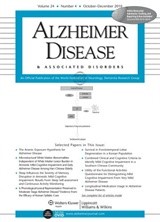
The King-Devick (K-D) test is a 1 to 2 minute, rapid number naming test, often used to assist with detection of concussion, but also has clinical utility in other neurological conditions (eg, Parkinson disease). The K-D involves saccadic eye and other eye movements, and abnormalities thereof may be an early indicator of Alzheimer disease (AD)-associated cognitive impairment. No study has tested the utility of the K-D in AD and we sought to do so. The sample included 206 [135 controls, 39 mild cognitive impairment (MCI), and 32 AD dementia] consecutive subjects from the Boston University Alzheimer’s Disease Center registry undergoing their initial annual evaluation between March 2013 and July 2015. The K-D was administered during this period. Areas under the receiver operating characteristic curves generated from logistic regression models revealed the K-D test distinguished controls from subjects with cognitive impairment (MCI and AD dementia) [area under the curve (AUC)=0.72], MCI (AUC=0.71) and AD dementia (AUC=0.74). K-D time scores between 48 and 52 seconds were associated with high sensitivity (>90.0%) and negative predictive values (>85.0%) for each diagnostic group. The K-D correlated strongly with validated attention, processing speed, and visual scanning tests. The K-D test may be a rapid and simple effective screening tool to detect cognitive impairment associated with AD.
Summary Points:
- Current estimates indicate 5.3 million Americans are living with AD and the prevalence is expected to rise exponentially over the next 2 decades.
- A brief, non-invasive test that is rapid and easy to administer, and is sensitive to detection of MCI and AD dementia would be optimal for primary care or similar settings.
- Saccadic eye movement impairments are one of the most commonly documented forms of oculomotor dysfunction in AD patients.
- The objective of this study was to examine the utility and accuracy of the K-D in a sample of cognitively healthy older adult controls, and individuals with MCI and AD dementia from the Boston University Alzheimer’s Disease Center participant registry.
- The study revealed significant differences on the K-D total time score across the diagnostic groups as well as total errors. Both MCI and AD dementia subjected performed worse than controls on the K-D.
- The K-D was an effective measure for identifying cognitive impairment and distinguishing between patients with MCI and AD dementia from healthy older adults.
- The K-D performed equally well in detecting MCI and AD dementia from controls and therefore supports its utility in the detection of subtle cognitive impairment, and its application is not limited to severe forms of cognitive impairment.
- The K-D Test evaluates processing speed and visual tracking and performance on the test is dependent on saccadic eye movement.
- The K-D is an ideal test for many clinicians and clinical researchers in high patient and research subject volume settings.
- In addition to being brief and inexpensive, the K-D test requires minimal training to administer or interpret.
- The K-D was highly correlated with other well-established and validated neuropsychological measures of attention, visual tracking, and processing speed. Given that these measures assess mental abilities that overlap with those required for the K-D, the study provides evidence for good convergent validity for the K-D Test.
- The accuracy of the well-validated neuropsychological tests in detecting cognitive impairment improved in the presence of the K-D, highlighting the additive clinical utility of this measure.
The K-D is a brief and easily administered test that may be an effective tool to detect cognitive impairment. Findings suggest that the K-D may be an appropriate screening measure in fast-pace clinical settings, such as primary care offices, to assist in the early detection of cognitive impairment and guide referral for more comprehensive evaluation to ultimately facilitate early intervention.

Background: The King Devick Test (KDT) is an easily and quickly administered bedside clinical measure which assesses attention, processing speed, and visual scanning capabilities and has been extensively validated as a sensitive and specific measure for evaluating sports-related concussion. KDT slows by an average of 5.2 seconds following concussion. Emerging evidence suggests that idiopathic REM sleep behavior disorder (iRBD) represents prodromal synucleinopathy in most patients. We analyzed serial KDT scores in patients with iRBD or RBD plus mild cognitive impairment (MCI) to determine the feasibility of KDT for detecting evolving changes in attention, processing speed, and visual scanning.
Methods: Adult patients with RBD by ICSD-3 criteria with (iRBD) and with MCI (RBD+MCI) were administered the KDT in the Mayo Alzheimer’s Disease Research Center and iRBD prospective registry cohort. We analyzed KDT scores at baseline and one-year follow-up visits.
Results: Thirteen patients were studied, 9 with iRBD and 4 with RBD+MCI. Mean age was 66.5 years, and 11 (85%) were men. The mean (± SD) KDT score of all patients at baseline was 57.8 (± 10.79) seconds, and at follow up was 57.8 (± 11.6) seconds. There were no significant differences in KDT scores between groups at both time points. Five (38.4%) patients scored worse at their follow-up visit compared to baseline, 3 of whom were RBD+MCI patients. Of those with worsening scores, mean change in performance was 9.1 (± 7.4) seconds.
Conclusions: Over 38% of our RBD patients demonstrated decreased performance on the KDT, suggesting emergence of subtle impairments in attention, processing speed, or visual scanning functions. Future longitudinal studies involving larger iRBD and RBD+MCI cohorts with longer follow-up time will be required to determine if decreased performance on the KDT predicts phenoconversion from iRBD to RBD+MCI, and RBD+MCI to dementia with Lewy bodies.
Summary Points:
- Evidence suggests that idiopathic REM sleep behavior disorder (iRBD) represents prodromal synucleinopathy in most patients.
- Over 38% of RBD patients in this cohort demonstrated worsening performance on the KD Test suggesting emergence of subtle impairments in attention, processing speed, or visual scanning functions.
- Future study will determine if this decreased performance on the K-D test predicts phenoconversion from idiopathic RBD to RBD with mild cognitive impairment (MCI) and RBD+MCI to dementia with Lewy Bodies.

Background
Abnormal color vision and contrast acuity may have significant impact on daily activities.Objective
Evaluate color visual acuity, at high and low contrast, in Parkinson's disease (PD) and controls using an iPad application.Methods
Color visual acuity was tested with the Variable Contrast Acuity Chart (King-Devick Test LLC, Oakbrook Terrace, IL) on an iPad 2 at 40 cms using five colors (red, green, blue, yellow, and black) at low (2.5%) and high (100%) contrast. A numerical score (0–95) was assigned based on the number of correctly identified letters.Results
Thirty-six PD (mean ± standard deviation age 68 ± 10 years) and 36 controls (72 ± 11.2 years) were studied. PD disease duration was 6.4 ± 4.6 years; MDS-UPDRS part II was 11.7 ± 7.0, and part III was 24.5 ± 9.9. After adjusting for age and sex, PD patients had significantly (P < 0.05) lower scores at high (100%) as well as low (2.5%) contrast for all five colors tested (red, green, blue, yellow, and black), except yellow low contrast (2.5%; P = 0.10). The largest effect size (0.88) was with yellow high contrast, and the sensitivity, specificity, positive predictive value, negative predictive value, and accuracy using a cut-off score of 82 was 31%, 97%, 92%, 58%, and 64%, respectively. No correlation to disease duration was found.Conclusions
This iPad application may be a simple-to-use biomarker for assessing color vision in PD. Further research is needed to determine disease specificity and whether there is a role in monitoring disease progression, treatment response, and identifying prodromal PD.
Background:
Wide-ranging functional defects in eye movements have been reported in Alzheimer’s disease (AD) dementia. The detection of abnormal eye movements and reading problems may identify persons at risk of AD when clear clinical symptoms are lacking.
Objective:
To examine whether computer-based eye-tracking (ET) analysis of King-Devick (KD) test results differentiates cognitively healthy persons from persons with minor problems in cognitive testing or diagnosed mild AD.
Methods:
We recruited 78 participants (57 non-demented, 21 with mild AD) who underwent neurological examination, the Consortium to Establish a Registry for Alzheimer’s Disease neuropsychological test battery (CERAD-NB), and a Clinical Dementia Rating (CDR) interview. The non-demented participants were further divided into control (normal CERAD subtests, mean MMSE = 28) and objective mild cognitive impairment (MCI; decline in at least one CERAD memory score, mean MMSE = 27) groups. The KD reading test was performed using computer-based ET. The total time used for the reading test, errors made, fixation and saccade durations, and saccade amplitudes were analyzed.
Results:
We found significant differences between the control, objective MCI, and AD groups in regard to the mean saccade amplitude (3.58, 3.33, and 3.21 ms, respectively, p < 0.03) and duration (27.1, 25.3, and 24.8 ms, respectively, p < 0.05). The KD error scores in the AD group differed significantly (p < 0.01) from the other groups.
Conclusion:
Computed ET analysis of the KD test may help detect persons with objective MCI early when clear clinical symptoms are lacking. The portable device for ET is easy to use in primary health care memory clinics.
Summary Points:
- Both the duration and amplitude of saccades were significantly decreased in the MCI and AD groups compared to the control group. As expected, the controls were significantly faster on the KD test than the AD patients. The AD group had the highest number of reading errors, and less than half (38.9%) of the AD group managed to complete the KD test without making errors.
- The KD test is a standardized, commercially available reading test. We consider it to be a potential method of detecting cognitive impairment in neurodegenerative disorders, such as AD.
- New, objective methods that are easy to carry out to detect early signs of AD are important to identify because only early AD diagnosis and treatment initiation may delay progression of the disease and postpone the dementia stage and need for institutional care.
- We report that saccadic eye movement alterations occur very early in the disease course, even earlier than the other reports have indicated. These findings support the idea that eyes and eye functions are interesting research targets for new AD biomarkers
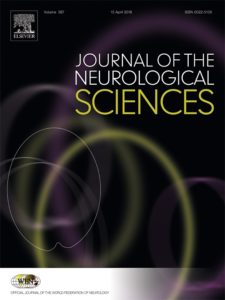
Highlights
- Athletes reporting premorbid anxiety and/or depression perform worse on visual motor speed components of neurocognitive testing
- No differences were found between matched controls and athletes reporting premorbid anxiety and/or depression on baseline Vestibular/Ocular Motor Screening and King-Devick assessments
- Athletes reporting premorbid anxiety and/or depression report higher symptom severity scores than matched controls
- Poorer visual motor speed performance and higher symptom severity scores are not unusual for athletes with premorbid psychological conditions
Abstract
Concussion has become a growing concern among sport and healthcare practitioners. Experts continue to investigate ways to advance the quality of concussion evaluation, diagnosis and management. Psychological conditions have been reported to influence concussion assessment outcomes at baseline and post-concussion; however, little evidence has examined psychological conditions and their effect on multifaceted measures of concussion. A retrospective cohort design was employed to examine differences between those with and without a premorbid psychological condition for high school and collegiate athletes who completed a preseason baseline battery, consisting of symptom reporting, computerized neurocognitive assessment, Vestibular-Ocular Motor Screening (VOMS), and the King-Devick (KD) test. Forty athletes within the sample self-reported a diagnosed psychological risk factor, consisting of depression and/or anxiety, and each were matched with a discordant control. Controls were matched on sex, age, sport, concussion history and ocular history. Athletes with psychological conditions reported higher symptom severity and had worse visual motor speed than controls. There were no differences between groups on other neurocognitive domains, VOMS, or KD. These results suggest that vestibular-ocular tools may be more consistent or less likely to vary between those with and without a premorbid psychological diagnosis, adding value to tools such as the KD and VOMS.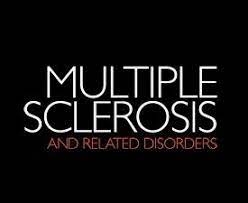
Background:
Slowed information processing speed is the most prevalent cognitive symptom in persons with multiple sclerosis (MS). The most commonly used instrument to measure information processing speed in MS is the Symbol Digit Modalities Test (SDMT). However, visual, oculomotor, and oralmotor deficits are frequently observed in persons with MS, and performance on the SDMT relies on these visual and motor functions, in addition to cognition.
Methods:
The current study examined the relationship between the SDMT and the King Devick Test (KDT). The KDT encompasses similar oculomotor and oralmotor demands as the SDMT but requires a smaller attentional load. One hundred and thirty participants with MS completed the oral version of the SDMT and the KDT. Ordinary nonparametric bootstrapped regression models were performed with 1000 bootstrapped samples. Bootstrapped confidence intervals (CIs) were bias corrected.
Conclusions:
Visual, oralmotor , and oculomotor functions contributed significantly to SDMT performance. Therefore, these sensory and motor functions must be taken into account when interpreting SDMT scores.
Summary Points:
- King Devick Test performance explained 31% of the variance of SDMT performance, much more than demographic and disease related variables.

Background:
Balance assessment is used by clinicians as part of athlete concussion screening. The King-Devick (K-D) Balance app is designed to provide an objective balance assessment value. The purpose of this study was to investigate the responsiveness of a balance assessment using the K-D Balance app.
Hypothesis:
The K-D Balance app will demonstrate acceptable responsiveness for balance assessment.
Study Design:
Repeated-measures study.
Level of Evidence:
Level 5.
Methods:
A convenience sample of 25 participants between the ages of 20 and 25 years completed testing procedures. A battery of balance tests using the K-D Balance app on an iPhone were conducted 1 week apart. After a 5-minute warm-up, 3 stances were assessed: double leg, tandem right, and tandem left. The K-D Balance app guided the test positions and test times. A value representing movement was generated by the app algorithm. Analysis included descriptive statistics along with intraclass correlation coefficient and minimal detectable change (MDC).
Results:
The median score of the K-D test was 0.5 for session 1 and 0.4 for session 2. The ICC was 0.42 (95% CI, 0.04-0.70), and the MDC was 1.58.
Conclusion:
The MDC value of 1.58 represents the threshold of meaningful change in balance, as measured with the K-D Balance app.
Clinical Relevance:
Clinicians can use the results of this study to objectively assess changes in balance over time using the K-D Balance app.

Purpose:
The King-Devick Test (KDT) has been used to assess neurocognitive consequences of call duty in residents and found less improvement in performance following call and in those reporting more sleepiness. It tests speed and accuracy of number-reading and requires integrity of visual processing, saccades and cognition. The purpose of this study is to evaluate neurocognitive effects call duty in residents in a Level 1 Trauma Center.
Methods:
A prospective cohort study was conducted on residents. The experimental group completed the KDT on pre-call day 1 and post-call, days 2 and 3. Controls were tested on 3 consecutive days without call. The primary outcome was time to complete the KDT and number of errors. Estimated hours of sleep and Karolinksa Sleepiness Scale (KSS) prior to each test were recorded. These results, demographic details and PGY level were documented for each resident. Statistical analysis used student’s t, Wilcoxon ranked sum and chi-squared/ Fisher’s exact tests, Pearson’s correlation and mixed regression models adjusted by Tukey post-hoc test on SAS software. Significance was set at p<0.05.
Results:
132 residents (53 experimental and 79 controls) completed the KDT tests. Mean (SD) age was similar: experimental 28.45±2.49yrs vs controls 29.01±3.23yrs; p=0.289. PGY level also was similar: 2.04±1.13 vs 1.81±1.00 respectively; p=0.238. Females outnumbered males in the controls (p=0.008) and Medicine outnumbered Surgical residents (p=0.002). Mean (SD) hours of sleep between Day 1 and 2 differed (experimental 6.02±2.75hrs vs controls 7.01±2.09hrs; p=0.028). Day 2 to Day 3 saw a reversal (experimental 7.82±2.65hs vs controls 6.76±2.16hrs; p=0.013). KSS was greater after call in the experimental (4.70±1.84) than control group (3.76±1.81); p=0.004. However, there was no difference in KDT performance. Difference in KDT time occurred between Day 2 and Day 3 with better performance in the call group who had more sleep (Medicine -2.21 secs; p=0.023 and Surgery -3.41secs; p=0.009). Significance was reduced after adjusting for confounding variables. There was an inverse relation between hours of sleep and both KSS score (r=-0.28; p=0.001) and change in KDT time from Day 2 to Day 3 (r=-0.19; p=0.029).
Conclusions:
KSS and KDT improved with more hours of sleep the night before testing, suggesting greater importance in amount of sleep than call duty or service of call.
This is a 2020 ARVO Annual Meeting abstract.

Though studies describe postconcussive changes in eye movements, there is a need for data describing baseline eye movements. The purpose of this study was to describe baseline eye movements and visual contrast acuity using the King-Devick (KD) Eye Tracking System and KD Visual Contrast Sensitivity Chart. Fewer total saccades were noted in soccer players than basketball players (soccer, 56.9 ± 14.3; basketball, 101.1 ± 41.3; p = .0005). No significant differences were noted for the number of saccades between sexes (males, 60.4 ± 20.3; females, 84.9 ± 41.8, p = .100) or in contrast acuity between all groups (p > .05). These results suggest the presence of sport-specific trends that may invalidate the comparison of postconcussion evaluation to generic baseline athlete eye movements.
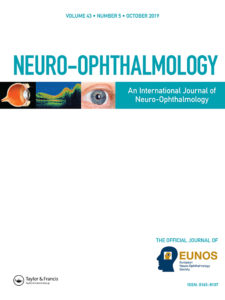

Purpose:
To test the association between participant King-Devick Test (KDT) times and obstructive sleep apnea (OSA) severity and evaluate for improvement after continuous positive airway pressure (CPAP) treatment.
Methods:
Study dates January 30 to July 31, 2018. Patients were referred for initial evaluation of sleep disordered breathing concerns. OSA severities were defined by Apnea Hypopnea Index (AHI) results, with ≥15 considered at least moderate OSA. The KDT is an objective physical measure of brain function. We estimated correlation between KDT time and AHI and compared mean KDT time between patients with and without moderate OSA. For the OSA subgroup, we evaluated for potential improvement in KDT after CPAP.
Results:
We enrolled 60 participants, of whom 35 (58.3%) had OSA with an AHI ≥15. Initial analyses noted no significant KDT time differences between patients based on OSA severity. However, after excluding 3 participants who had baseline neurologic illness, adjusted analyses demonstrated that mean KDT time was significantly prolonged for patients with moderate or greater OSA (AHI ≥15) as compared to those with mild or no sleep apnea (AHI <15); 63.4 seconds (95% CI 58.9-67.8) versus 55.7 seconds (95% CI 50.2-61.1), P = .03. CPAP-treated subjects demonstrated significantly improved KDT test times; 63.5 seconds mean pretreatment versus 55.6 posttreatment; −6.6 seconds mean difference, 95%CI (−12.0, −1.13), P = .02.
Conclusion:
Neurologic abnormalities in patients with OSA are potentially demonstrable utilizing this objective physical measure. Significant improvement is achieved in patients after CPAP treatment.
Summary Points:
- Mean K-D test time was significantly longer for patients with moderate or greater obstructive sleep apnea as compared to those with mild or no sleep apnea.
- CPAP-treated subjects demonstrated significantly improved K-D test times.
- Using the K-D test aids in providing objective results regarding the subjective improvements many patients report with OSA treatment.

Background and objective:
Subjective grade-based scoring balance assessments tend to be lengthy and have demonstrated poor repeatability and reliability. This study examined the reliability of a mobile balance assessment tool and differences in balance measurements between individuals at risk for a balance deficit secondary to a diagnosed neurological or musculoskeletal condition and a control group of healthy individuals.
Methods:
Objective balance testing was measured using K-D Balance on a compatible iPhone. Seventy-seven participants were enrolled (control group, n = 44; group at risk for balance deficits, n = 33). Mean and standard deviation of K-D Balance were recorded for each stance. Intra-rater reliability was calculated by repeating the trial.
Results:
Overall balance scores were superior for the control group compared with the group at risk for balance deficits in double leg stance (mean (SD): 0.15 (0.12) versus 0.18 (0.13), p = 0.260), tandem stance right leg (mean (SD): 0.27 (0.17) versus 0.45 (0.49), p = 0.028), and tandem stance left leg (mean (SD): 0.26 (0.17) versus 0.35 (0.35), p = 0.136). Intra-rater reliability was good to excellent for K-D Balance double leg stance (intra-class correlation coefficient (ICC) = 0.80, 95% confidence interval (CI) 0.58–1.03), tandem stance right leg (ICC = 0.96, 95% CI 0.86–1.06) and tandem stance left leg (ICC = 0.98, 95% CI 0.95–1.0).
Conclusions:
K-D Balance revealed differences in balance performance between healthy individuals compared with individuals with neurological or musculoskeletal impairment. Objective balance measures may improve the accuracy and reliability of clinical balance assessment by detecting subtle differences in balance and aid in early detection of diseases that impair balance.
Summary Points:
- K-D Balance is an objective balance test that can quantify subtle abnormalities in balance performance, thereby improving the accuracy and reliability of clinical balance assessments.
- Individuals with neurological or musculoskeletal impairments scored worse on K-D Balance tandem and double leg stances compared to the control group.
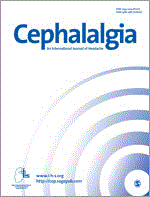
Background:
The King-Devick test is a timed rapid number naming task that involves complex cerebral functions. The objective of this pilot exploratory study is to determine whether there is a difference in the King-Devick test during a migraine attack compared to the interictal phase.Methods:
We evaluated 29 adult subjects with migraine with aura or migraine without aura. For each participant, we performed King-Devick tests during migraine attacks and interictal phases. Subjects served as their own controls.Results:
The King-Devick test was slower during the migraine attack compared to the interictal baseline (median 4.6 sec slower, p<0.001). The slowing of the King-Devick test during migraine attack was more prominent in those with migraine with aura compared to subjects with migraine without aura (median 7.5 vs. 2.8 sec, p = 0.028).Conclusions:
This exploratory, observational study shows changes in the King-Devick test during migraine compared to the interictal phase. Future studies are required to determine if the King-Devick test may be used as a rapid and simple tool to objectively characterize migraine-associated disability.Summary Points:
- The K-D test score was slower during the migraine attack compared to the baseline (when no migraine was present). The slowing of K-D test score during migraine attack was more prominent in those with migraine with aura compared to subjects without aura.
- The K-D test may be a rapid and simple tool to objectively characterize migraine-associated disability.
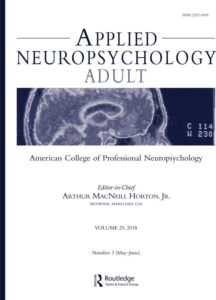
The King–Devick test (K–D) has demonstrated sensitivity as a screener measure of ocular motor and cognitive problems. Despite its empirical support in the assessment of patients with certain injuries and disorders (e.g., concussion, reading disorders), less is known about the construct validity of the K–D. This study examined this topic in an outpatient, diagnostically heterogeneous clinical sample. A total of 70 individuals seen for an outpatient psychoeducational evaluation completed the K–D in addition to measures of intellectual abilities, speeded reading ability, simple and sustained attention, and executive functioning. Pearson correlation coefficients revealed that poorer K–D performance was associated with poorer processing speed, speeded reading ability and response time to target stimuli (r = .26–.31, p < .05). K–D performance was unrelated to other intellectual abilities, other aspects of attention, or executive functioning (all p > .05). Results suggest that the K–D demonstrates good convergent and discriminant validity in a heterogeneous outpatient clinical sample including individuals with attention-deficit hyperactivity disorder, specific learning disorders, and a number of different depressive and anxiety disorders. Findings support its wider use as a measure of reading ability and processing speed in clinical contexts.
Summary Points:
- Poorer performance on the King-Devick test was associated with poorer processing speed, speeded reading ability and response time to target stimuli.
- The K-D test demonstrated good convergence and discriminant validity in this outpatient, diagnostically heterogeneous clinical sample.
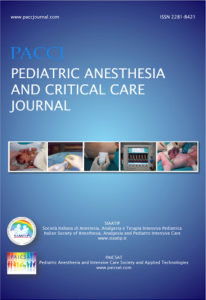
Introduction:
It is recommended that pediatric patients be released from the post-anesthesia recovery area once they are no longer at risk for cardiorespiratory depression. However, these guidelines do not specify how a provider is to monitor recovery of neurocognitive status. Previous studies have evaluated the utility of psychomotor tests to measure anesthetic recovery; however, most of these tests are time consuming and are rarely used in the post-anesthesia recovery area. The Trieger Dot Test (TDT) is one of these tests and is a well validated measure of anesthetic recovery. The King Devick Test (KDT) has emerged as a scientifically valid test for a multitude of neurological medical conditions. The test uses a system of Rapid Number Naming which assesses the subject’s ability to read aloud a series of numbers and determines their ability to discern levels of contrast. This test detects impairments of eye movements, language, attention, and overall neurological function and is validated down to an age of 5 years.
Hypothesis:
There is no measured difference in the return to baseline between the King Devick Test and the Trieger Dot Test in determining sedation recovery in non-neurological pediatric patients. Material and methods: Subjects were recruited from the University of Iowa pediatric sedation clinic. The recruited subjects were children and adolescents between the ages of 6-17. No patients with a neurologic diagnosis were included in the study. Each patient performed both the KDT and TDT pre-sedation to establish a baseline. These tests were repeated once when the patient woke up (Post1) and again 20 minutes later (Post2). These tests did not interfere with clinical care, and the discharging physician was blinded to the results. After discharge, the family repeated both tests on the subject at home 24 hours post-sedation. Results: A total of 41 patients were recruited for the study. Extraneous deviations for the TDT were compared to a total score for the KDT which summed the time and errors from all three cards. Baseline was established as baseline +/- 1/5(median change in score after sedation) to account for natural random variation. The results of the paired tests for KDT show that there is a highly significant difference between scores at baseline, Post1, and Post2 (p < 0.001). The p-values for the same tests for TDT were also all significant at the 5% level, however the difference between deviations at the Post2 after sedation is much less significant (p = 0.04). The results of McNemar’s statistical test show no difference between the two assessments at Post1 (p = 0.31), but a significant difference between the assessments at Post2 (p = 0.04). 0.018).
Conclusions:
The paired t-test results show that the KDT, like the TDT, can measure differences in a patient’s cognitive ability during recovery from sedation. Furthermore, McNemar’s statistical test shows that at Post2 the TDT significantly classified more patients at baseline than the KDT. This corresponds with the results of the paired t-tests, in that more patients were close to baseline at Post2 for the TDT, than for the KDT. Overall, we can conclude that there is evidence that the KDT is more sensitive to impairment than the TDT, and if it were used in place of the TDT it would take more time for children to return to baseline after sedation.
Summary Points:
- When compared to the Trieger Dot Test, the King-Devick Test is a valid assessment tool in evaluating cognitive recovery of pediatric patients who receive sedation.
- In addition, the study findings show that it may be more sensitive to cognitive impairment than the Trieger Dot Test.

Objective:
The objective of this study was to examine the effects of alcohol on cognitive performance with increasing blood alcohol concentration (BAC), as measured by the King-Devick (KD) test and Mobile Universal Lexicon Evaluation System (MULES).
Background:
Cognitive impairments from alcohol consumption may manifest on tests that assess cognitive function, such as the KD test and MULES. Studies suggest that the threshold for detecting impairment from concussion is 3-seconds on KD testing and 4-seconds on MULES; however, a similar threshold has not been identified for detecting alcohol intoxication.
Design/Methods:
Eleven subjects (7 females, 4 males; ages 21-39) participated in four, 20-minute blocks of alcohol consumption, 10 minutes of rest with BAC measurement, and KD and MULES testing. The KD and MULES testing focused on performance time, while KD also evaluated the number of saccades/blinks. Women received alcohol (vodka in orange juice) doses of 0.75+/-0.1 g/kg body mass and men received 1.0 +/- 0.1 g/kg body mass.
Results:
On average, each 20-minute period of consuming alcohol raised BAC by 0.02. There was a statistically significant effect of BAC on both the KD (p<0.001) and MULES (p<0.001) performance times. Specifically, KD times demonstrated a ≥3 sec increase at a BAC of 0.08, while the ≥4 sec threshold was reached at a BAC of 0.06 for the MULES testing. No statistical differences were noted between BAC and saccades or numbers of blinks during the KD test (p>0.05).
Conclusions:
At a BAC of 0.08, KD test time exceeded 3 seconds, consistent with thresholds used to diagnose concussion. However, the ≥4 seconds threshold was achieved with a BAC of 0.06 for the MULES test. Thus, the MULES test may be a more sensitive measure of alcohol intoxication. Further studies with larger sample sizes are warranted to further characterize changes in testing times resulting from increasing BAC.
Summary Points:
- K-D Test scores were significantly slower as blood alcohol concentration increased.
- A blood alcohol concentration of 0.08 resulted in a 3-second increase in K-D Test scores, which is similar to changes observed following a concussion.

Objective: Sleep deprivation has a negative effect on neurocognitive performance. The King-Devick test (KDT),which tests speed and accuracy of number-reading, requires integrity of saccades, visual processing, and cognition. This study investigated effects of sleep deprivation in on-call residents using KDT. Methods: A prospective cohort study was conducted among 80 residents. KDT was performed at the beginning and end of an overnight call shift for the residents in the experimental group. A control group was tested at the beginning of 2 consecutive day shifts. Estimates of hours of sleep, Karolinska Sleepiness Scale (KSS)(1=extremely alert, 9=extremely sleepy), and time and accuracy of KDT were recorded. Results: 42 residents were tested before and after overnight call shifts and 38 served as controls. Change in test time differed between the groups, with the experimental group performing 0.54(SD=4.0) seconds slower after their night on call and the control group performing 2.32(SD=3.0) seconds faster on the second day, p < 0.001. This difference was larger in surgical compared to medical residents. Conclusions: Sleep deprivation was inversely correlated with neurocognitive performance as measured by KDT, with more effect on surgical than medical residents. Further research could investigate whether this test could help determine fatigue level and ability to continue working after a long shift.
Summary Points:
- The K-D Test tests speed and accuracy of rapid number naming and requires saccadic integrity, visual processing, cognition, speech, and language. Especially relevant to this project, it requires intact saccadic eye movements which, in turn, require a fully functioning system of cortical structures working in tandem such as frontal eye fields and the dorsolateral prefrontal cortex. These may be prone to disruption and dysfunction from head trauma and sleep deprivation.
- The experimental group performed slower following their night on call, while the control group performed faster than their pre-test. This difference remained significant after adjustment for hours of sleep the night before the pre-test and for pre-test KDT scores. Adjusting for both variables together, there was a trend toward greater KDT score improvements for residents in the control group.
- Higher scores on the sleepiness scale prior to the pre-test were associated with more KDT score improvement in the post-test. Higher scores on the sleepiness scale in the post-test were associated with a worsening of the KDT score.
- Surgical residents in the experimental group had less improvement in KDT score time, slowing down on the post-test. In contrast, medical residents in the experimental group did not differ significantly in KDT score improvement from their control counterparts.
- The KDT is an effective metric for detecting changes in neurocognitive function
- Residents cognitive function can be evaluated by the K-D Test, a test that broadly assesses neurocognitive status and afferent/efferent vision and which has been used as a screening tool for certain impairments.
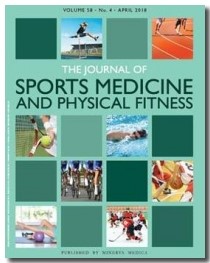
One of the most common ways physicians currently diagnose and assess concussions and concussion recovery is using the Immediate Post-Concussion Assessment and Cognitive Test (ImPACT) [1]. This test is a neurocognitive assessment that provides feedback based on categorical norms. It is plausible that the ImPACT, or other similar neurocognitive tests, could be a tool in measuring the effects of hypoxia on cognitive performance. Hypoxia, defined as a low partial pressure of Oxygen in the blood stream, has many similar symptoms to those noted with concussions, namely a significant decrement in cognitive performance [2].
Repeated neurocognitive assessment is commonly used in order to diagnose concussions based on cognitive function, with the ImPACT test being the most commonly used assessment [1]. This neurocognitive assessment is essential to understanding differences in performance and progress when used during concussion recovery. In a validation investigation of the ImPACT, researchers had 95 college varsity athletes complete baseline cognitive testing approximately 2 years apart [3]. Subjects were concussion-free during the entirety of this investigation. The researchers in the study performed analyses on the gathered data and found that the intraclass correlation causation estimates for visual memory was 65; for processing speed it was 74 and for reaction time it was 68 [3]. With regards to verbal memory and symptom scale, there was greater variability at 46 and 43, respectively [3].From these results, the researchers concluded that the cognitive performance of these college athletes remained relatively stable over the evaluated 2 year time period [3]. These results support the notion that baseline neurocognitive testing need not be evaluated annually.
An alternative to using the ImPACT for neurocognitive function assessment is the King Devick (KD) test. Recently, the KD test has been advocated as an easy way to diagnose and monitor concussion and immediate neurocognitive injury in a field setting e.g., sideline evaluation [4]. Concussions in sport is a very real danger and additional tests like the KD test could enhance the understanding of medical professionals with regards to athlete safety.With the popularity of the ImPACT test on the rise amongst sports medicine professionals, the question has arisen regarding how the KD test would perform in comparison. Dziemianowicz et al.[5]compared test results from the KD to ImPACT composite scores. Unlike with the ImPACT, the KD test relies on visual motor speed analysis for a rapid assessment of cognitive visual processing and performance. Most specifically, the KD test is designed around rapid number naming and pattern identification.
Utilizing 35 recently concussed athletes, researchers sought to validate the KD test as a comparable diagnostic tool to the ImPACT[4]. In the investigation, subjects completed four separate clinical visits where each time they completed a symptom test, the KD test, and the ImPACT[4]. Researchers found that the KD test and the ImPACT test both indicated parallel improvements as symptoms continued to resolve for the patients [4]. Researchers hypothesized that both assessments run in parallel, and are somewhat interchangeable, when using ocular motor speed tracking as the primary mechanism for monitoring recovery [4].With its simplicity of administration, the King Devick (KD) test allows for researchers to emphasize and evaluate the role of impaired eye movement in patients and correlate these findings with sub-optimal brain function [6]. In this investigation, researchers administered the KD test to a group of amateur, adolescent boxers prior to, and immediately following a fight. Utilizing a single-blinded approach, third party test evaluators were given the results of the KD tests for each of the subjects and asked to evaluate the efficacy of the assessment for identifying head trauma and symptoms of concussion. Third party evaluators were able to note, with significance, a decline in performance between baseline and post-fight results given the dramatic increase in time to perform KD test, further supporting the efficacy of field-expediency in test administration [6].
While both the ImPACT and KD test have been frequently validated to identify symptoms of concussions, research is relatively limited on the value of these tests in identifying the effects of both chronic and acute hypoxic exposure. Researchers have noted that hypoxia, or reduced arterial Oxygen saturation, can greatly impair human performance [7]. Most often, these symptoms are associated with exposure to altitude as a direct consequence of the reduced partial pressure of atmospheric Oxygen, reducing the gradient of exchange at the level of the alveoli. With exposure to altitude, assessments should be administered on a stepwise basis, as symptoms associated with hypoxia have been shown to increase incrementally due to both increased time of exposure, and increased altitude. Bartholomew et al. [7] recruited 72 subjects and flight instructors in aviation school to participate. Subjected were asked to read and recall a series of numbers at exposure to a variety of simulated altitudes, to include 2,000, 12,500, and 15,000 feet. Subjects were also given either high or low memory load pieces of information to recall over the radio during the evaluation [7].
Researchers found that individuals assigned high memory load tasks demonstrated marked declines in performance with incremental exposure to altitude [7]. These findings imply that altitude, and in effect hypoxia, influences the amount of cognitive resources available for information processing. This decline in cognitive function could greatly increase the risks associated with performance of task-related objectives in certain professions requiring altitude exposure e.g., aviation, military, etc. Researchers suggest that future investigations seek alternative mechanisms for simulating hypoxia via both altitude and exercise to identify the potential compounding effect of physical activity on exacerbating symptoms [7].
Aside from high altitude exposure, hypoxia can also be induced by breath holding while performing physical exertion, most commonly observed in swimming and free diving. In both of these sports, hyperventilation is the primary means through which the human body can decrease Carbon Dioxide saturation in the blood, enhancing individual breath hold capacity [8]. A dramatically reduced Carbon Dioxide concentration in the blood carries the risk of increased risk of syncope, or loss of consciousness, which could be fatal in the underwater theater. Lindholm et al [8] recruited 8 trained breath hold divers, half of which had previously experienced hyperventilation induced syncope, to track arterial Carbon Dioxide saturation during prolonged apnea, or breath holding, performed prior to submaximal physical activity.
During this investigation, researchers tracked arterial Oxygen saturation using a beat-by-beat pulse oximeter, blood lactate concentration, and respiratory exchange ratio (RER) to track preferential macronutrient utilization following physical activity [8]. From the findings, researchers noted that the experienced divers had a far lower partial pressure of Carbon Dioxide and Oxygen in the blood following exercise when compared to control iterations [8]. Researchers postulated that, while there were significant differences in these metrics following exercise and hypoxic exposure relative to the controls, it was possible that the lack of familiarity with the above-water environment, may have yielded undue influence on the effects. Researchers suggested that future investigations implement cognitive assessments to be performed in both the hypoxic and control environments in this trained population to identify the potential deleterious effects of this environment on cognitive function [8].
Finally, in response to apnea exposure in certain divers, sympathetic activity can be ameliorated with the cessation of respiration, allowing certain individuals to remain underwater for extended periods of time [9]. Individuals whose training involves high stress environments and SCUBA insertion, such as the U.S. Army Special Forces Combat Divers and trainees at the Combat Diver Qualification Course (CDQC), train to optimize and utilize many physiological skills and adaptations [10]. This course is extremely rigorous both physically and mentally, placing a very high demand on cardiorespiratory function. Learning to optimize performance in the hypoxic environment through optimization of the dive response with repeated apneas is critical to both training and mission success. It is possible that enhancing these adaptations to hypoxia, can be learned and better allow individuals to sustain optimal neurocognitive function, which could be assessed using the ImPACT or KD test [10].
Summary Points:
- The K-D test has been advocated as an easy way to diagnose and monitor concussion and immediate neurocognitive injury, enhancing the understanding of medical professionals with regards to athlete safety.
- With its simplicity of administration, the KD test allows for researchers to emphasize and evaluate the role of impaired eye movement in patients and correlate these findings with sub-optimal brain function.
- The K-D Test has the potential to identify effects of both chronic and acute hypoxic exposure. Individuals whose training involves high stress environments and SCUBA insertion, such as the U.S. Army Special Forces Combat Divers and trainees at the Combat Diver Qualification Course, train to optimize and utilize many physiological skills and adaptations would could be assessed using the KD Test.

Background: When considering a possible Obstructive Sleep Apnea (OSA) diagnosis, clinicians often need to rely on subjective,
patient reported symptoms such as excessive daytime sleepiness, snoring and witnessed apnea. Measuring impaired brain function caused by sleep deprivation and hypoxia could provide needed objectivity to potentially aid case finding and risk stratification and potentially demonstrate treatment effect. Over 50% of brain pathways are utilized in vision and reading. K-D Test measures speed and accuracy during a rapid number naming task in which a series of single-digit numbers is read aloud. The King-Devick Test (KDT) is a rapid number naming test used in baseline assessments and remove from play decisions for concussion. KDT is an objective physical measure of neurologic function. Abnormalities in saccadic eye movements are associated with issues frequently found in OSA patients (i.e. sleep deprivation, hypoxia and cognitive impairment).
Specific Aims: 1. Test for association of subject KDT time with OSA severity, based on Apnea Hypopnea Index (AHI); 2. Evaluate for improvement in brain function after treatment with Continuous Positive Airway Pressure (CPAP) by way of KDT time.
Hypothesis: OSA patients who adhere to CPAP therapy will demonstrate a statistically significant improvement in their KDT time compared to baseline.
Methods: Design: Pilot study of a prospective cohort; Subjects: Patients referred to Sleep lab for initial evaluation of Sleep Disordered Breathing concerns; Sample size: 60 subjects provide adequate power to detect a 0.36 correlation coefficient between AHI and KDT time. Assuming half will have OSA which requires CPAP treatment, there would be adequate power to detect a 0.55 SD difference in KDT pre- and post-treatment. Subjects read aloud from left to right as fast as possible for 3 screens. Total time and errors are recorded.
Data Collection: Collect KDT in sleep lab prior to scheduled polysomnography. Collect demographic information and data necessary for Sleep Apnea Clinical Score. Collect medical histories from Electronic Health Record. Collect sleep testing outcomes from sleep lab database. Repeat KDT for those treated with CPAP at compliance visit with Sleep Medicine provider. Descriptive analysis about demographic and clinical characteristics of the cohort are summarized by severity of OSA. Estimate correlation coefficient between KDT and AHI. Compare mean KDT between patient subgroups with the two-sample t-test with or without moderate OSA (AHI < & ‑ 15), with normal and abnormal AHI (< 5 & ‑ 5). For the OSA subgroup, measure the improvement in KDT and AHI pre and post CPAP treatment by paired t-test.
Results: Recruitment 1/30/2018-3/27/2018: 126 patients presented to Sleep Lab; 11 declined 60 enrolled 55 screen failures
37 with CPAP recommendation, 23 with no CPAP recommendation; 35 with AHI ≥ 15 2 with AHI < 15; 22 with repeat KDT for comparison; 14 lost to follow up; 1 excluded from analysis due to dementia. OSA patients with moderate OSA (AHI score greater than or equal to 15) had worse KDT scores compared to OSA patients without moderate OSA (AHI scores less than 15) (64.9s (3.16) vs 61.0 (3.74)). OSA patients with abnormal AHI scores (greater than or equal to 5) had worse KDT scores compared to OSA patients with normal AHI scores (less than 5) (63.9 (2.92) vs. 59.6 (6.24)). There was not a statistically significant association of KDT with AHI as a continuous variable (Pearson correlation coefficient 0.10 (-0.16, 0.35). CPAP treatment was associated with significantly improved KDT time (mean difference -6.6s (12.2), p=0.02).
Conclusions: The neurologic function of patients with moderately severe OSA differs from those with mild or no OSA, as determined by the King Devick Test. KDT time ranges between normal and abnormal patients, however, overlap. Clinically, patients with established neurologic illness such as MCI, Dementia and Parkinson’s have slower baseline KDT times. This may decrease the utility of OSA prediction by KDT in these patients. Larger studies are needed to assess if KDT time thresholds exist to aid OSA screening. KDT has the potential to optimize OSA risk stratification processes through demonstrating patient neurologic impairment. OSA patients treated with CPAP demonstrate improved brain function as measured by significantly faster times on KDT. Assessment with KDT has the potential to be a paradigm shifting tool in OSA patient management.

Objective:
Use a rapid reading test to assess reading difficulties and to perform eye movement recordings in different neuroophthalmic diseases.
Background:
Neurological issues like stroke, cancer, neurodegeneration, and others frequently lead to vision loss, eye movement abnormality, or both, resulting in difficulties with common daily visual functions including saccadic reading.
Design/Methods:
We recruited and assessed reading and visual disability at a single institution in over 200 controls and patients with different neuro-ophthalmic diseases, including homonymous hemianopia, eye movement disorder, and Parkinson’s disease. Subjects read 120 single digit numbers as fast as they could, which helped assess basic ocular motor and cognitive abilities necessarily during left-to-right saccadic reading without semantic context. Seventy controls and patients underwent 500-Hz binocular 2D infrared oculography (SensoMotoric Instruments) in order to quantify their saccade and fixation parameters during reading.
Results:
Patients with cerebellar ataxia (n=8; p=0.001) read the slowest, about 35% slower compared with controls (n=122), followed by those with down-beating nystagmus (n=23; p=0.004), Parkinson's disease (n=54; p= 0.001), and homonymous hemianopia (n=16; p=0.06). Infrared oculography revealed that patients with hemianopia exhibited striking spatial bias toward their visual field defect, during visual tasks and left-to-right reading. In contrast, patients with eye movement abnormality exhibited no spatial bias but had significantly greater total scanpaths while reading 120 numbers (p<0.005). Those with cerebellar ataxia and down-beating nystagmus had 27% smaller saccade amplitudes (p<0.005) and 17% greater fixation dispersion (p<0.01). Patients with Parkinson’s disease also exhibited no left-right spatial bias and greater total scanpaths (p=0.001). They had increased number of fixations (p=0.004) and saccades (p<0.001) but normal saccade amplitudes and fixation dispersion during reading.
Conclusions:
Single digit number reading test is an easy way to assess reading difficulties in the clinical setting, and eye movement recording reveals a variety of ways that reading can be impacted in different neurological conditions.
Summary Points:
- Neurological conditions commonly lead to visual dysfunction.
- Patients with neurological conditions demonstrated significant eye movement changes as compared to controls using eye tracking technology.

Purpose: AMD is one of the leading causes of vision loss globally. Since color vision impairment is often one of the first symptoms of retinal disease, earlier AMD detection may be possible using color vision screenings. This potential detection could result in earlier treatment and decreased progression of the disease before irreversible damage to sight occurs.
Methods: Patients from the Illinois Eye Institute and Chicago Eye Institute were asked to perform the King Devick Variable Color Contrast Sensitivity(VCCSC) iPad test monocularly at their best corrected near visual acuity with black, red, blue, green, and yellow letters at various contrast levels (100%,75%,50%, and 25%). Identification accuracy (out of 5 letters) was recorded as both color and contrast changed.
Results: Data was analyzed using SPSS v21. All values are presented as means±SEM. The control group (n=35) age 50-79 years (46% male, 54% female). The non-exudative (NE) AMD(n=26) age 60-82 years (67% male, 33% female). A significant decrease in vision was noted in AMD patients for black 100% (C:36.0±1.7 vs AMD:109.9±21.7,p<0.001), blue 75% (C 4.4±0.2 vs AMD:4.7±0.1,p<0.028), yellow 75%(C:3.2±0.3 vs AMD:4.1±0.3,p<0.023), and blue 50%(C:4.1±0.2 vs AMD:4.6±0.1,p<0.045) contrast letters compared to the control. Interestingly, difficulty reading all colors at 25% contrast was similar between AMD and control patients.
Conclusions: Our results show that there is greater variability in color vision and color contrast in NE-AMD patients compared to healthy patients. Specifically, blue and yellow seem to be more difficult for AMD patients. Further testing is needed to determine what threshold of color and contrast best distinguishes AMD with the potential to detect AMD at an earlier stage and initiate more effective treatment.
Summary Points:
- The tablet-based K-D Variable Contrast Sensitivity Chart was used to measure color contrast sensitivity in patients with age-related macular degeneration (AMD).
- AMD patients demonstrated significantly worse vision under conditions of 100% black, 75% blue, 75% yellow and 50% blue letter presentations.
- There is greater variability in color vision and contrast acuity in AMD patients. This tool is useful in measuring visual function deficits and differentiating controls from AMD patients.

Objective: To evaluate visual acuity at high and low contrast with five distinct colors (red, green, blue, yellow, and black) in Parkinson’s disease (PD) patients and controls using an iPad application.
Background: Changes in color vision and contrast sensitivity are a non-motor feature of PD. These changes can have a significant impact on activities such as driving and walking in low-light condition.
Design/Methods: Subjects were recruited from Mayo Clinic Arizona and the Arizona Study of Aging and Neurodegenerative Disorders. A movement examination, including the Movement Disorders Society Unified Parkinson’s Disease Rating Scale, was recorded on the day of vision testing. Visual acuity was tested with the Variable Contrast Acuity Chart (King-Devick Test LLC, Oakbrook Terrace, IL) on an Apple iPad 2. Subjects were tested at a comfortable reading distance (40 cms) using five distinct colors (red, green, blue, yellow, and black) at low (2.5%) and high (100%) contrast.
Results: 36 patients with PD (mean age 68 years) and 36 control subjects (mean age 72 years) were studied. The mean disease duration of PD was 6.4 ± 4.6 years, Hoehn and Yahr staging was 2.0 ± 0.6, MDS-UPDRS part II was 11.7 ± 7.0 and part III was 24.5 ± 9.9. After adjusting for age and gender, PD patients had significantly (p<0.05) lower scores at high (100%) as well as low (2.5%) contrast for all five colors tested except for yellow at low contrast (2.5%) (p=0.10).
Conclusions: PD patients have significantly reduced visual acuity for all the colors tested at various levels of contrast (except for yellow at low contrast) compared to controls. This test can serve as a useful tool for assessing vision in PD and has potential for being a biomarker to differentiate PD from controls.
Summary Points:
- Visual sequelae of Parkinson’s Disease can have a significant impact on activities of daily living.
- In this study utilizing the tablet-based K-D Variable Contrast Sensitivity Chart, Parkinson’s Disease patients have worse visual acuity at both high (100%) and low (2.5%) contrast under colors black, red, blue and green.
- The K-D Variable Contrast Sensitivity Chart is a useful tool for assessing visual function in PD and has a biomarker to differentiate PD from controls.

Introduction: Resident sleep deprivation is an important topic given its negative effect on neurocognitive performance. The King-Devick test (KDT), which tests speed and accuracy of number-reading, requires integrity of saccades, visual processing, and cognition. The purpose of this study is to investigate neurocognitive effects of sleep deprivation in on-call residents using KDT.
Methods: A prospective, cohort study was conducted among 80 residents (PGY2-4) from multiple departments of an urban teaching hospital. KDT was performed at the beginning and end of an overnight call shift for the residents in the experimental group. A control group was tested at the beginning of 2 consecutive day shifts. Estimates of hours of sleep, Karolinska Sleepiness Scale (KSS) (1=extremely alert, 9=extremely sleepy), and time and accuracy of KDT, the primary outcome variable, were recorded. We performed t-test, regression analysis, and correlation analysis. Statistical significance was set at p<0.05. Results: 42 residents were tested before and after overnight call shifts and 38 served as controls. Mean age and gender breakdown were similar between groups: age 28.95 years (standard deviation (SD)=2.49) in experimental group and 29.84(SD=3.36) in controls (p=0.18); 47.6% female in the experimental group and 47.4% in controls (p=0.98). Change in test time was significantly different between the groups, with the experimental group performing 0.54 (SD=4.0) seconds slower after their night on call and the control group performing 2.32 (SD=3.0) seconds faster on the second day, p<0.001. Residents reporting more sleep the night between the two tests had greater improvement in their test times (Pearson r=-0.31, p=0.005). Residents reporting more sleepiness on the KSS had less improvement in their test time (r=0.25, p=0.027). Conclusion: Sleep deprivation and self-reported sleepiness were inversely correlated with neurocognitive performance as measured by KDT. More research is required to determine whether this test could help determine resident fatigue or ability to continue working after a long shift.
Summary Points:
- Sleep deprivation and self-reported sleepiness using the Karolinska Sleepiness Scale were correlated with worse performance on KDT.

OBJECTIVE: To detect an alteration in central nervous system function using KDT and VCS by demonstrating a difference during a migraine attack compared to the inter-ictal (between attack) phase.
BACKGROUND: Migraine is characterized by head pain and other symptoms such as photophobia, cognitive dysfunction and alterations in visual contrast during attacks. The KDT is a timed rapid number naming test that evaluates saccadic eye movements, attention, information processing, and is highly sensitive to altered cerebral function. For VCS, participants are asked to read rows of letters of varying size on an iPAD with low contrast level to the background. KDT and VCS have been shown to correlate with neurologic dysfunction in various neurological diseases.
DESIGN/METHODS: We included adult subjects with episodic or chronic migraine with or without aura (less than 25 headache days/month). We enrolled on-site Mayo employees, and the KDT and VCS were performed by the same examiner to minimize bias. For each participant, we performed KDT and VCS testing during headache phase of migraine attack, and inter-ictal non-headache phases. Power analysis suggests a sample size of 26 subjects is needed to detect an effect size of 0.8 for both KDT and VCS, with an 80% power and a significance level at 0.05. Subjects served as their own controls.
RESULTS: We collected data on 28 subjects. There was a statistically significant difference in the performance of KDT during a migraine attack compared to the interictal baseline. On average, the KDT score was 6.3 seconds longer during the migraine attack compared to the interictal baseline performance. For VCS (both 100% and 2.5% contrast sensitivity), there was no significant difference between the migraine attack and the interictal baseline.
CONCLUSIONS: This study provides objective quantitative data demonstrating altered cerebral function during migraine attacks. Saccadic eye movements may serve as a biomarker for a migraine attack. The KDT could be an effective tool to understand migraine pathophysiology, document the true interictal state, as well as to characterize migraine associated disability during and between attacks.
Summary Points:
- Migraine patients demonstrated a significant 6.3 second worsening in K-D Test performance from baseline during migraine attack
- This study provides objective quantitative data demonstrating altered cerebral function during migraine attacks
- The K-D test serves as a migraine biomarker and may predict the premonitory phase and onset of migraine attack providing an opportunity for earlier therapeutic intervention to improve patient outcomes

Idiopathic Parkinson’s Disease (PD) is characterized by degeneration of dopaminergic and other neurons, leading to motor and non-motor deficits. Abnormal eye movements in PD, including fixations, saccades, and convergence, are well described. However, saccadic reading, which requires serial and alternating saccades and fixations, is not well studied, despite its obvious impact on the quality of life. In this study, we assessed saccadic reading using variations of the King-Devick (KD) test, a rapid single digit number naming test, as a way to assess the ability to make serial left-to-right ocular motor movements necessary for reading. We recruited 42 treated PD patients and 80 age-matched controls and compared their reading times with a variety of measures, including age, duration of disease, Unified Parkinson’s Disease Rating Scale (UPDRS), the National Eye Institute 25-Item Visual Functioning Questionnaire 25 (VFQ-25), and Montreal Cognitive assessment (MoCA) test. The subjects performed 4 trials of reading 120 single digit numbers aloud as fast as possible without making errors. In each trial, they read 3 pages (KD1, KD2, and KD3), and each page contained 40 numbers per page in 8 lines with 5 numbers/line. We found that PD patients read about 20% slower than controls on all tests (KD1, 2, and 3 tests) (p < 0.02), and both groups read irregularly spaced numbers slower than regularly spaced numbers. Having lines between numbers to guide reading (KD1 tests) did not impact reading time in both PD and controls, but increased visual crowding as a result of decreased spacing between numbers (KD3 tests) was associated with significantly slower reading times in both PD and control groups. Our study revealed that saccadic reading is slower in PD, but controls and PD patients are both impacted by visuospatial planning challenges posed by increased visual crowding and irregularity of number spacing. Reading time did not correlate with UPDRS or MoCA scores in PD patients but significantly correlated with age, duration of disease, and VFQ-25 scores. The presence of convergence insufficiency did not significantly correlate with reading time in PD patients, although on average there was slower reading time in those with convergence insufficiency by 8 s (p = 0.2613). We propose that a simple reading task using 120 single-digit numbers can be used as a screening tool in the clinical setting to assess functional ocular motor difficulties in Parkinson’s disease that can have a profound impact on quality of life.
Summary Points:
- There was significantly slower reading in PD compared with age-matched controls. PD patients read 11 seconds or 20% slower compared with controls.
- KD reading times significantly correlated with PD disease duration.
- Health related quality of life scores using the Visual Function Questionnaire correlated significantly with KD reading times.
- Although extremely important as a part of daily living, reading abilities are not typically assessed in the clinical setting. The KD test is one such test that can be readily used to assess ocular motor abilities necessary in reading that is relatively not impacted by the native language abilities.

Purpose: Parkinson’s Disease(PD) is the second most common neurodegenerative disease globally. As many as 78% of PD patients report difficulty with vision and reading, but few studies have directly examined reading in PD patients. The goal of this study is to better assess visual disability and reading difficulties in PD patients.
Methods: We recruited 112 subjects (59 PD, 53 age-matched controls) per approved protocol at a single academic institution. All subjects were assessed using the Visual Function Questionnaire (VFQ-25), Neuro-Ophthalmic(NO-10) supplement, and King-Devick (KD) rapid number naming test. We performed 500-Hz 2D infrared oculography (RED500, SMI, Germany) on a subset of subjects (21 PD and 14 controls) during reading (8 pages of single digit numbers at 40/page and 14 pages of words, 3-8 lines/page). Statistical analysis was performed using Mann-Whitney U test.
Results: Per vision disability questionnaire, PD patients experienced greater self-reported visual dysfunction (VFQ-25: PD:62.7±3.1, Ctrl=88.7±1.7, P<0.00001; NO-10: PD:62.5±3.2, Ctrl=85.2±2.7, P=0.00002). The largest differences were observed in the near activities, computer use, and mental health subscores (P<0.0001). On the KD test, PD patients read slower by 24% (PD:1 20.5±5.6 #/min, control: 158.3±6.1 #/min, P=0.00002), which correlated with VFQ-25 scores (P=0.0009) but not with Unified Parkinson’s Disease Rating Scale (P=0.14). Infrared oculography confirmed that PD patients exhibited slower number (PD: 107.0±5.3 #/min, Ctrl:148.3±8.8 #/min, P=0.001) and word reading (PD: 200.2±12.0 words/min, control: 246.2±13.4 words/min, P=0.024). PD patients made greater number of saccades/line (PD: 9.0±0.9, Ctrl: 4.9±0.1, P=0.08) and fixations/line (PD: 8.6±0.8, Ctrl: 6.0±0.28, p= 0.025), smaller saccade amplitudes (PD: 3.50±0.05deg, Ctrl: 4.36±0.30deg, p=0.035), longer
fixations, and greater fixation dispersion.
Conclusions: Our study is the largest so far to systematically assess reading in PD. Visual disability and reading difficulty are common and likely directly impact mental health. Eye movement
recording revealed that fixation and saccade measurements are both significantly affected during reading, with some patients exhibiting poor oculomotor planning and backtracking. The etiology of reading difficulty in PD patients is likely multifactorial in origin, and neuro-ophthalmic assessments of PD patients should include examination of reading.
Summary Points:
- Eye movements during reading are significantly affected in Parkinson’s disease.
- K-D Test performance is significantly worse in Parkinson’s patients compared to normal controls, specifically, PD patients were 24% slower.
- K-D Test performance correlates with vision related disability measures.

The King–Devick (K–D) test of rapid number naming is a visual performance measure that captures saccadic eye movements. Patients with multiple sclerosis (MS) have slowed K–D test times associated with neurologic disability and reduced quality of life. We assessed eye movements during the K–D test to identify characteristics associated with slowed times. Participants performed a computerized K–D test with video-oculography. The 25-Item National Eye Institute Visual Functioning Questionnaire (NEI-VFQ-25) and its 10-Item Neuro-Ophthalmic Supplement measured vision-specific quality of life (VSQOL). Among 25 participants with MS (age 37 ± 10 years, range 20–59) and 42 controls (age 33 ± 9 years, range 19–54), MS was associated with significantly longer (worse) K–D times (58.2 ± 19.8 vs. 43.8 ± 8.6 s, P = 0.001, linear regression models, accounting for age). In MS, test times were slower among patients with higher (worse) Expanded Disability Status Scale scores (P = 0.01). Average inter-saccadic intervals
(ISI) were significantly longer in MS participants compared to controls (362 ± 103 vs. 286 ± 50 ms, P = 0.001), and were highly associated with prolonged K–D times in MS (P = 0.006). MS participants generated greater numbers of saccades (P = 0.007). VSQOL scores were reduced in MS patients with longer (worse) K–D times (P = 0.04–0.001) and longer ISI (P = 0.002–0.001). Patients with MS have slowed K–D times that may be attributable to prolonged ISI and greater numbers of saccades. The K–D test and its requisite eye movements capture VSQOL and make rapid number naming a strong candidate efferent visual performance measure in MS.
Summary Points:
- The K–D test is a simple visual-verbal task that requires saccades and interleaved fixations.
- MS is associated with prolonged test completion times for the K-D test of rapid number naming.
- Slowing of K-D Test times is associated with longer ISI (intersaccadic interval) time and increase overall numbers of saccades suggesting a potential role for both eye movement and attention-related mechanisms.
- Prolonged K-D Test times and ISI also reflected worse vision-specific quality of life among MS participants.
- Eye movement abnormalities with electronic recordings showed the above abnormalities in MS even in the absence of clinically evident findings.
- The K–D test is an easy to administer, rapid test that may prove to be a helpful performance measure of visual disability; this is analogous to the concept that the timed 25-foot walk is a performance measure that broadly captures aspects of gait performance and mobility in MS.

Objective: Speeded Saccadic Eye Movement Predicts Symbol Digit Modalities Test Performance in Multiple Sclerosis
Background: Multiple sclerosis is an autoimmune demyelinating disease with estimates of cognitive impairment above 30% in pediatric and 50% in adult patients. The SDMT, a widely-used screening tool that measures speeded information processing, has been used to track cognitive decline in MS. The K-D test is a brief measure of saccadic eye movement speed using a timed number naming test, commonly used for the detection of mild traumatic brain injury. Here, we tested the sensitivity of the K-D test in MS and its association with performance on the SDMT.
Design/Methods: Adult and pediatric patients with clinically-definite MS were consecutively recruited through the NYU Langone MS Comprehensive Care Center. All participants completed the SDMT and K-D at a single visit.
Results: A total of 30 participants completed the assessments ranging in age from 13 to 72 years (mean 38 ± 19 years), were 74% female, and with an EDSS range 0.0 to 6.5. Relative to age normative data, the K-D indicated greater impairment than the SDMT (74% vs. 48%, respectively). Controlling for age, both tests were significantly correlated (r=0.44, p =0.02), demonstrating a close contribution of oculomotor function to SDMT performance.
Conclusions: The K-D test is sensitive to detecting impairment in MS across the lifespan. Performance on the SDMT is closely associated with oculomotor function in MS.
Study Supported by: The Lourie Center for Pediatric Multiple Sclerosis
Summary Points:
- K-D Test is sensitive to detecting impairment in MS across the lifespan.
- K-D Test performance is correlated with SDMT performance demonstrating close contribution of oculomotor function.
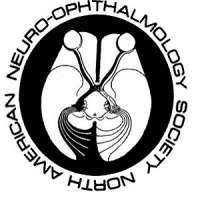
Introduction:
Parkinson’s Disease (PD) is the second most common neurodegenerative disease globally. While the majority of PD patients report difficulties with vision (1-3), few studies have examined reading in PD (4-5). The goal of this study is to better assess vision disability and reading difficulties in patients with PD.
Methods:
We recruited 112 subjects (59 PD, 53 age-matched controls) per approved protocol at a single academic institution. All subjects were assessed using National Eye Institute Visual Function Questionnaire (VFQ-25), 10-Item Neuro-Ophthalmic (NO-10) Supplement, and King-Devick test to assess reading speed. We performed 500-Hz infrared oculography (RED500, SMI) on some subjects (21 PD and 14 controls) during reading.
Results:
Per vision disability questionnaires, PD patients experienced greater visual dysfunction, with a significantly lower scores compared with that of controls (VFQ-25 P<0.00001; NO-10: P=0.00002; Mann-Whitney U test for all statistical analyses). Notably, the largest differences were observed in the near activities and mental health subscores (P<0.0001). On the King-Devick test, PD patients read significantly slower by 24% (P=0.00002), which correlated with VFQ-25 scores (P=0.0009) but not with Unified Parkinson’s Disease Rating Scale scores (P= 0.14). Infrared oculography revealed that PD patients exhibited significantly slower number (P=0.001) and word reading (P=0.024) and made a greater number of saccades (P=0.08) and fixations per line (P=0.025). They also made smaller saccades (P=0.035), longer fixations, and more errors (regressive saccades).
Conclusions
Our study is the largest so far to systematically assess vision disability and reading, which are significantly worse in PD, can occur early, is not necessarily correlated with Unified Parkinson's Disease Rating Scale, and likely directly impact quality of life and psychological health. Infrared oculography reveals that both fixation and saccade measurements are significantly affected during reading, and some PD patients also exhibited poor ocular motor planning and made more mistakes, likely related to issues impacting higher order processes.

The King–Devick test (K–D) is sensitive to the effects of acute sleep deprivation. It remains unclear whether the K–D is sensitive to the effects of chronic partial sleep restriction (SR). K–D performance was compared in a college student sample at baseline and after a week of SR. Subjects also completed measures of attention, processing speed, working memory, vocabulary and verbal reasoning. Subjects performed worse relative to their baselines on the K–D than previous test–retest reliability literature indicates, and worse on tests of attention, processing speed and working memory. Verbal reasoning and vocabulary were unaffected. An association between K–D performance and sleep duration during SR trended toward significance. These results provide initial support for the sensitivity of the K–D to SR.
Summary Points:
- The King-Devick Test is a reliable, easy-to-administer and cost-effective assessment of visual scanning.
- This study aimed to assess whether the K-D is sensitive to the effects of sleep restriction and whether performance on the K-D is associated with other cognitive abilities typically affected by sleep restriction and is less association with cognitive abilities that are less affected.
- Subjects took longer to complete the K-D
- Changes in performance on the K-D were associated with changes in performance on other clinical measures of abilities associated with sleep restriction, including working memory, executive functioning and sustained attention.
- There was a trend for performance on the K-D to be associated with the patient self-report measure of night-by-night sleep quantity.
- In the current study, sleep restricted subjects took a mean of 4.8s longer from K-D baseline.
- Changes in K-D performance were related to changes in performance of executive functioning.
These findings suggest that sleep restriction affects a variety of cognitive domains and that the K-D may be sensitive to one or more of these domains.

Purpose : Vision difficulties have been well described in patients with Parkinson’s Disease (PD), but the etiologies underlying PD patients’ difficulties in performing functional tasks like reading are not well understood. In this study, we performed clinical and infrared oculography studies of reading in PD in order to better delineate the causes.
Methods : We performed a prospective cross-sectional study of 23 treated patients with PD and 25 controls with no known visual symptoms. We assessed subjective visual disability using the National Eye Institute Visual Function Questionnaire (VFQ-25) (n=16), measured reading speed using a rapid number naming task called the King-Devick test (n=23), and further analyzed ocular motor behavior during reading in PD patients with good visual acuity using 500-Hz infrared oculography (RED500, SensoMotoric Instruments) (n=9). Stimuli included fixation, number-reading, and word-reading tasks. Statistical analysis was performed using the Mann-Whitney test (Prism).
Results : PD patients reported decreased visual function with a mean VFQ-25 score of 81±3.6 (n=16), and 56% had moderate or extreme difficulties with near activities. Using the King-Devick (KD) test, we found that PD patients were significantly slower readers than age-matched controls (PD: 68.3±6.5s, ctrl: 48.8±2.4s, p = 0.009), which correlated with subjective decrease in near activity on VFQ-25 (r2=0.49). On infrared oculography, PD patients had significantly slower number reading speed (PD: 100.2 ±12.1 numbers per minute (npm), ctrl: 145.0±20.6 npm, p=0.05) and word reading speed (PD: 135.3±15.1 words per minute (wpm), ctrl: 230.2±21.0 wpm, p=0.01). The slower reading was attributable to more frequent (PD: 6.6±0.3 saccades/line, ctrl: 4.9±0.1 saccades/line, p=0.08) and smaller saccades, more regressions (PD: 9.1%, ctrl: 5.3%, p=0.05), and longer fixations (PD: 266±13 ms/line, ctrl: 233±14 ms/line, p=0.05).
Conclusions : The majority of treated PD patients reported visual disability, especially with reading and near work which correlated with worse performance on a rapid number reading task. Using infrared oculography to study reading behavior, we found that PD patients exhibited abnormalities in saccades, fixations, and reading behavior, which were attributable to ocular motor abnormality, impaired ocular motor planning, and cognitive dysfunction.

Introduction:
Visual function in multiple sclerosis (MS) has been well characterized from an afferent standpoint using low-contrast acuity, optical coherence tomography (OCT) and quality of life (QOL). Compared to controls, patients with MS also demonstrate slowed reading times on the King-Devick (K-D) test, a rapid number naming task that captures widely distributed aspects of efferent function, particularly saccades. Slowed times in MS are associated with neurologic dysfunction and reduced vision-specific (QOL). However, the ocular motor underpinnings of such slowing have not been determined. We sought to determine ocular motor performance and characterize deficits leading to slowed KD reading times using recorded eye movements during a digitized King-Devick (K-D) test.
Methods:
We tested 13 patients with MS (mean age 37) and compared their results to those of our normative database of control participants without MS (n=38, mean age 31). Participants completed the digitized K-D task with simultaneous video-oculographic eye movement recording (EyeLink 1000+). Data were analyzed off-line in Matlab and Stata 14.0.
Results:
Digitized K-D completion times in the MS cohort were longer (worse) relative to controls (52.6 ± 14.1 sec vs. 43.7 ± 8.5 sec, p=0.02, ttest). Intersaccadic intervals (ISI), which represent a combination of saccadic latency and fixation duration between saccades, were prolonged in MS patients (397 ±137 msec vs. 312 ± 53 msec, p=0.02, t-test). Within the MS cohort, test times were longer for the digitized vs. spiral-bound hand-held K-D test (52.0 ± 9.2 sec vs. 43.7 ± 9.7 sec, p=0.01, linear regression).
Conclusions:
In this ongoing study of ocular motor performance in MS, we have demonstrated that K-D reading times are slower secondary to prolonged ISI. The K-D test captures efferent visual dysfunction in MS and is likely to be a sensitive performance-based outcome measure for future research, practice and clinical trials.
Summary Points:
- Laboratory-based eye movement study completed to determine oculomotor performance and characterize KD deficits in multiple sclerosis (MS).
- Digitized KR reading times were prolonged for MS patients compared to controls.
- Average inter-saccadic intervals (ISI) represents a combined measure of saccade latency and fixation duration.
- ISI was prolonged in MS patients.
- The K-D test captures efferent visual dysfunction in MS as such is a sensitive performance-based outcome measure for future research, practice, and clinical trials.
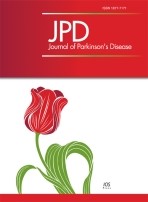
Background: Low-contrast vision is thought to be reduced in Parkinson’s disease (PD). This may have a direct impact on quality of life such as driving, using tools, finding objects, and mobility in low-light condition. Low-contrast letter acuity testing has been successful in assessing low-contrast vision in multiple sclerosis. We report the use of a new iPad application to measure low-contrast acuity in patients with PD.
Objective: To evaluate low- and high-contrast letter acuity in PD patients and controls using a variable contrast acuity eye chart developed for the Apple iPad.
Methods: Thirty-two PD and 71 control subjects were studied. Subjects viewed the Variable Contrast Acuity Chart on an iPad with both eyes open at two distances (40 cm and 2m) and at high contrast (black and white visual acuity) and 2.5% low contrast. Acuity scores for the two groups were compared.
Results: PD patients had significantly lower scores (indicating worse vision) for 2.5% low contrast at both distances and for high contrast at 2m (p < 0.003) compared to controls. No significant difference was found between the two groups for high contrast at 40 cm (p = 0.12).
Conclusions: Parkinson’s disease patients have reduced low and high contrast acuity compared to controls. An iPad app, as used in this study, could serve as a quick screening tool to complement more formal testing of patients with PD and other neurologic disorders.
Summary Points:
- High contrast and low contrast visual acuity was measured in individuals with Parkinson’s Disease (PD) and compared to controls.
- Contrast acuity was measured with the King-Devick Variable Contrast Acuity Chart as an application on an iPad.
- PD patients had significantly worse low contrast visual acuity (2.5% at 40 cm and 2 m) and worse high contrast acuity at far (100% at 2 m), compared to those without PD.
- Low contrast acuity scores correlated with disease severity.
The K-D Variable Contrast Acuity Chart provides a portable, adjustable, quantitative measure of contrast visual acuity, and may reveal undiagnosed visual impairment in patients with PD, along with a use in monitoring PD severity.

Background: The Swedish nuclear power plant Forsmarks Kraftgrupp AB (FKA) reported that they wanted to use a fi re prevention method by reducing the oxygen level down to 15% in some locations. The personnel are only going to work there for a limited number of hours. This fire protection method has never been used before in any nuclear power plant in spaces where people work. The background to the study was the lack of comparable, sufficiently relevant scientific literature on the topic of whether cognitive ability deteriorates or not when the oxygen (O2) level is reduced from the normal level (21%) to 15%, without habituation. SSM needed more knowledge of whether the cognitive abilities of the personnel could be affected in a negative way. The goal of the study was to provide SSM with the basis for oversight.
Objectives: The study was divided into two parts, a literature study and an experimental part. The phenomenon studied was comparable to the situation at the nuclear power plant. The persons involved in the experimental phase were exposed to a change from normal oxygen level to a reduced oxygen level without having time to adapt. The exposure to 15% oxygen was 2 h during the first exposure, 2 h during the second exposure and 45 min during the third and final exposure.
Results: The literature review primarily identified evidence that the effects on cognitive performance due to hypoxia at 15% O2, if any, would be small. A few researchers have reported findings that support adverse effects on cognitive performance already at 16-15% O2 concentration. In support of the hypothesis that no adverse effects on cognitive performance could be observed under conditions studied, there were no significant decreases in cognitive performance as a result of exposure to the experimental conditions with 15% O2. This study was clearly delineated and several possible influencing aspects were not included. Therefore, we cannot rule out possible interaction effects, with negative impact on cognitive ability, between hypoxia and other factors such as diseases, medication and drugs, concussion history, or other aspects of air quality.
Need for further research: There are several aspects of this research that should be of interest for further research by the nuclear industry.
Summary Points:
- There were no statistically significant differences in performance on the K-D test across baseline (normal room air) and the three exposures to the experimental condition (nitrogen-balanced breathing gas mixture of 15% O2).
- K-D test results across the total of 16 test occasions showed the largest performance change occurring between the first and second test occasion.

BACKGROUND: Afferent visual system disorders are included in the phenotypic spectrum Amyotrophic Lateral Sclerosis (ALS). High and low contrast visual acuity (HCVA and LCVA) are potential quantitative clinical markers of this dysfunction. Gold standard clinical research protocols for HCVA and LCVA measurements are difficult to implement in a neurology clinic. Pinhole is a possible substitute for refraction, which is time consuming requiring specialized equipment and personnel. Charts presented on tablets are a potential substitute for retro-illuminated charts, which are bulky and less readily available. The purpose of this study is to evaluate the effect of substituting pinhole for refraction and tablet charts for retro-illuminated charts on HCVA and LCVA in ALS patients.
DESIGN/METHODS: Monocular HCVA and 2.5% LCVA were measured at 2m in 8 ALS subjects using two chart conditions (retro-illuminated Sloan charts, iPad presented charts) and two correction conditions (spherical refraction, pinhole). Number of letters correctly identified was compared between chart condition and between correction conditions. Differences less than 5 letters (1 line) were considered comparable.
RESULTS: HCVA was comparable between correction conditions and between chart conditions for 6/8 (75%) and 7/8 (88%) subjects respectively. LCVA was comparable between correction conditions and between chart conditions for 3/8 (38%) and 6/8 (75%) respectively. In comparable values favored pinhole for HCVA and spherical refraction for LCVA.
CONCLUSIONS: In this pilot study, we find that HCVA and LCVA tablet presented charts produce comparable measurements to gold standard retro-illuminated charts in greater than 75% of ALS subjects. Pinhole correction is comparable to spherical refraction for measurements of HCVA but not LCVA. HCVA measurements with pinhole and tablet charts are less burdensome for ALS patients and research staff without sacrificing accuracy. Pinhole is not a suitable modification for LCVA measurements.
Summary Points:
- Compared the King-Devick Contrast Acuity Chart to the retro-illuminated Sloan chart in patients with ALS.
- High and low contrast visual acuity was comparable between the two chart types.
- The K-D Contrast Acuity Chart demonstrated an accurate measurement of contrast acuity, with the benefit of both portability, illumination, and availability compared to retro-illuminated charts.

BACKGROUND: ADHD is the most prevalent pediatric neurodevelopment disorder. In the United States, it is estimated that 5.4 million children 6 and 17 years of age (or 9.5% of U.S. children) have received an ADHD diagnosis. The King-Devick (K-D) test is a vision-based test of rapid number naming that requires saccades and visual processing. In sideline studies of youth and collegiate athletes with concussion, the K-D test consistently demonstrates higher (worse) time scores post-injury compared to pre-season baseline scores. There is growing evidence that, like concussion and mild traumatic brain injury, ADHD may be associated with visual pathway dysfunction.
PURPOSE: Using the King-Devick (K-D) test, a vision-based test of rapid number naming that requires saccades and visual processing. We investigated whether children with ADHD has worse scores compared to similar aged controls.
METHODS: Design: Prospective study of children with ADHD (diagnosed by Conners Scale and NYU pediatric neurologist) and age-matched controls. Participants: Patients diagnosed with ADHD (5-21 years of age) seeking care from the NYU Neurology Faculty Group Practice and Child Study Center. Analyses compared K-D scores of patients with ADHD to those of pre-season baseline scores for student-athletes controls category matched for age and gender. King-Devick Test: a vision-based measure of rapid number naming that varies the spacing between numbers on successive cards.
RESULTS: Among 134 participants in this study, ADHD vs. control status was significantly associated with higher K-D test time scores (p<0.001, logistic regression models, accounting for age). K-D showed a greater capacity to distinguish ADHD vs. control groups in youths older than 11 years of age (ROC curve areas from logistic regression models was, 0.55 for youths ≤11 years of age and 0.79 for youths ≥11 years of age). Patients with ADHD took an average of 14 seconds longer to complete the K-D test, compared to control youth (p<0.001, two-sample t-test). Use of stimulant medications was not associated with differences in K-D time scores within the cohort of patients with ADHD (p > 0.05, best KD trial of ADHD on Rx vs. best KD trial of ADHD off Rx).
CONCLUSIONS: Visual pathways may perform or be utilized differently in youths with ADHD compared to controls. This alteration in visual performance on the K-D test in youths with ADHD is likely due to the widespread distribution of brain pathways devoted to vision (approximately 50% of the brain’s circuits). The limited capacity of the K-D to distinguish ADHD in youths younger than 11 years of age may be due to variations in reading ability in this age group. Use of stimulant medication was not associated with altered K-D test performance.
Summary Points:
- Investigated if there was a difference in the King-Devick Test of rapid number naming in subjects (ages 5-21) with ADHD verses those without.
- Subjects with ADHD showed significantly worse K-D scores compared to the controls.
- The K-D Test demonstrated a greater capacity to distinguish ADHD vs. control groups in youths older than 11 years of age (ROC curve areas from logistic regression models was, 0.55 for youths ≤11 years of age and 0.79 for youths ≥11 years of age).
- Patients with ADHD took an average of 14 seconds longer to complete the K-D test, compared to control youth (p<0.001, two-sample t-test).
- ADHD medication was not associated with differences in K-D scores within the cohort.
- Since ADHD is a neuro-development disorder and more than 50% of the brain is devoted to vision, the K-D Test highlights aspects of vision which may be affected by ADHD.

Visual impairment is a key manifestation of multiple sclerosis. Acute optic neuritis is a common, often presenting manifestation, but visual deficits and structural loss of retinal axonal and neuronal integrity can occur even without a history of optic neuritis. Interest in vision in multiple sclerosis is growing, partially in response to the development of sensitive visual function tests, structural markers such as optical coherence tomography and magnetic resonance imaging, and quality of life measures that give clinical meaning to the structure-function correlations that are unique to the afferent visual pathway. Abnormal eye movements also are common in multiple sclerosis, but quantitative assessment methods that can be applied in practice and clinical trials are not readily available. We summarize here a comprehensive literature search and the discussion at a recent international meeting of investigators involved in the development and study of visual outcomes in multiple sclerosis, which had, as its overriding goals, to review the state of the field and identify areas for future research. We review data and principles to help us understand the importance of vision as a model for outcomes assessment in clinical practice and therapeutic trials in multiple sclerosis.
“The King-Devick Test, a brief rapid number-naming test new to the multiple sclerosis field, is a potential quantitative bedside performance measure of efferent visual dysfunction (Moster et al., 2014). This test takes 2 min to complete and is sensitive to dysfunction of saccadic and other eye movements; time scores are higher (worse) among patients with multiple sclerosis compared to disease-free controls. Further studies of this and other efferent visual function tests in multiple sclerosis are needed to bring assessment of this aspect of vision to the level of afferent system investigation.”
Summary Points:
- Review of literature exploring clinical measures of vision for patients with MS.
- Abnormalities of ocular motility are common in MS.
- The K-D Test is sensitive to saccadic dysfunction and other eye movements.
- K-D scores are worse among patients with MS compared to disease-free controls.

OBJECTIVE: We investigated the King-Devick (K–D) test of rapid number naming as a visual performance measure in a cohort of patients with multiple sclerosis (MS).
METHODS: In this cross-sectional study, 81 patients with MS and 20 disease-free controls from an ongoing study of visual outcomes underwent K-D testing. A test of rapid number naming, K-D requires saccadic eye movements as well as intact vision, attention and concentration. To perform the K-D test, participants are asked to read numbers aloud as quickly as possible from three test cards; the sum of the three test card times in seconds constitutes the summary score. High-contrast visual acuity (VA), low-contrast letter acuity (1.25% and 2.5% levels), retinal nerve fiber layer (RNFL) thickness by optical coherence tomography (OCT), MS Functional Composite (MSFC) and vision-specific quality of life (QOL) measures (25-Item NEI Visual Functioning Questionnaire [NEI-VFQ-25] and 10-Item Neuro-Ophthalmic Supplement) were also assessed.
RESULTS: K-D time scores in the MS cohort (total time to read the three test cards) were significantly higher (worse) compared to those for disease-free controls (P = 0.003, linear regression, accounting for age). Within the MS cohort, higher K-D scores were associated with worse scores for the NEI-VFQ-25 composite (P < 0.001), 10-Item Neuro-Ophthalmic Supplement (P < 0.001), binocular low-contrast acuity (2.5%, 1.25%, P < 0.001, and high-contrast VA (P = 0.003). Monocular low-contrast vision scores (P = 0.001-0.009) and RNFL thickness (P = 0.001) were also reduced in eyes of patients with worse K-D scores (GEE models accounting for age and within-patient, inter-eye correlations). Patients with a history of optic neuritis (ON) had increased (worse) K-D scores. Patients who classified their work disability status as disabled (receiving disability pension) did worse on K-D testing compared to those working full-time (P = 0.001, accounting for age).
CONCLUSIONS: The K-D test, a < 2 minute bedside test of rapid number naming, is associated with visual dysfunction, neurologic impairment, and reduced vision-specific QOL in patients with MS. Scores reflect work disability as well as structural changes as measured by OCT imaging. History of ON and abnormal binocular acuities were associated with worse K-D scores, suggesting that abnormalities detected by K-D may go along with afferent dysfunction in MS patients. A brief test that requires saccadic eye movements, K-D should be considered for future MS trials as a rapid visual performance measure.
Summary Points:
- The K-D Test captures visual dysfunction, vision specific quality of life and neurology impairment in MS.
- K-D scores correlated with work disability and retinal structural changes.
- History of optic neuritis and abnormal binocular visual acuity, common ocular complications of MS, were associated with worse K-D scores.
- Findings support the K-D Test as a rapid visual performance measure for MS trials.

Introduction: Visual performance impairment after hypoxia is well recognized in military and civilian aviation. The aims of this study were: 1) to assess oculometric features such as blink metrics, pupillary dynamics, fixations, and saccades as cognitive indicators of early signs of hypoxia; and 2) to analyze the impact of different hypoxic conditions [ “ hypoxic hypoxia” (HH) and “ isocapnic hypoxia” (IH)] on specified oculometrics during mental workloads.
Methods: Oculometric data were collected on 25 subjects under 3 conditions: normoxia, HH (8% O 2 + balance N 2 ), and IH (7% O 2 + 5% CO 2 + balance N 2 ). The mental workload task consisted of reading aloud linear arrays of numbers after exposure to gas mixtures.
Results: Blink rates were significantly increased under hypoxic conditions (by +100.7% in HH and by +92.8% in IH compared to normoxia). A faster recovery of blink rate was observed in transitioning from IH (23.6% vs. 76.3%) to normoxia. The percentage change in pupil size fluctuation was increased under HH more than under IH (29% vs. 4.4%). Under HH average fixation time and target area size were significantly higher than under IH. Total saccadic times under hypoxic conditions were significantly increased compared with normoxia.
Conclusions: These results suggest that oculometric changes are indicators of hypoxia, which can be monitored using compact, portable, noninvasive eye-tracking devices in a cockpit analogous environment to detect hypoxia-induced physiological changes in aircrew. Comparative results between HH and IH support the potential role of carbon dioxide in augmenting cerebral perfusion and hence improved tissue oxygen delivery.
Summary Points:
- Investigated oculometric tests as cognitive indicators of early signs of hypoxia.
- Blink rates increased, pupil size fluctuations increased, higher fixation time and target area size, and worse King-Devick Test scores were measured under hypoxic conditions (HH 8% O 2 + balance N 2) verses normoxia.
- The K-D Test measures saccadic function, which may be a reliable marker in neuro-physiological changes induced by hypoxia, and useful in assessing early signs of hypoxia prior to cognitive impairment.

Background: Unilateral spatial neglect (USN) is a visual-perceptual disorder that entails the inability to perceive and integrate stimuli on one side of the body, resulting in the neglect of one side of the body. Stroke patients with USN present with extensive functional disability and duration of therapy input.
Objective: To determine the effect of saccadic eye movement training with visual scanning exercises (VSEs) integrated with task-specific activities on USN poststroke.
Methods: A matched-pair randomized control trial was conducted. Subjects were matched according to their functional activity level and allocated to either a control (n = 12) or an experimental group (n = 12). All patients received task-specific activities for a 4-week intervention period. The experimental group received saccadic eye movement training with VSE integrated with task specific activities as an “add on” intervention. Assessments were conducted weekly over the intervention period.
Results: Statistical significant difference was noted on the King-Devick Test (P = .021), Star Cancellation Test (P = .016), and Barthel Index (P = .004).
Conclusion: Intensive saccadic eye movement training with VSE integrated with task-specific activities has a significant effect on USN in patients poststroke. Results of this study are supported by findings from previously reviewed literature in the sense that the effect of saccadic eye movement training with VSE as an intervention approach has a significant effect on the visual perceptual processing of participants with USN poststroke. The significant improved visual perceptual processing translate to significantly better visual function and ability to perform activities of daily living following the stroke.
Summary Points:
- Post-stroke patients with visual-perceptual dysfunction underwent 4 weeks of visual scanning exercises.
- The King-Devick Test was used to evaluate saccadic eye movement function pre- and post-training.
- There was a significant difference in K-D Test scores following training.
- The K-D Test is a useful clinical tool in monitoring progress in patients with visual difficulties following a stroke.
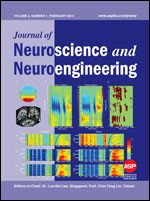
Cognitive impairment in amyotrophic lateral sclerosis (ALS) is associated with cortical changes beyond the motor cortex. The overall goal of this project is to determine if task induced hemodynamic changes detected by functional near infrared (fNIR) spectroscopy from the anterior prefrontal cortex (PFC) has discriminant validity across ALS (n = 17) patients and matching healthy (n = 17) controls. The experimental protocol was composed of the King-Devick Test, the Number Interference Test and a Continuous Performance Test targeting a range of cognitive domains including sustained attention and executive function. Results indicate that fNIR measures provided significant differences between ALS and healthy controls in all three tasks providing an additional metric for the assessment of cognitive decline. Although this is a pilot study, given the safe, wearable and real world validity of fNIR, these results may set the foundation for the use of fNIR as a clinical tool in monitoring progression of neurocognitive decline in a simple, less invasive and objective manner than allowed by current imaging technology.
Summary Points:
- Researchers utilized the King-Devick Test as a measure for evaluating the significance of functional near infrared spectroscopy of the brain for patients with ALS.
- K-D Test scores were significantly worse in the ALS group verses controls.
- The K-D Test captures impairment of eye movements, attention, language, and other correlates of suboptimal brain function in ALS.
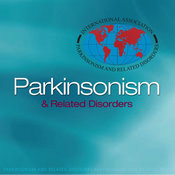
Background:
The King-Devick (KD) test measures the speed of rapid number naming, and is postulated to require fast eye movements, attention, language, and possibly other aspects of cognitive functions. While used in multiple sports concussion studies, it has not been applied to the field of movement disorders.
Methods
Forty-five Parkinson’s disease (PD), 23 essential tremor (ET), and 65 control subjects were studied. Subjects performed two trials of reading out loud single-digit numbers separated by varying spacing on three test cards that were of different formats. The sum time of the faster trial was designated the KD score and compared across the three groups.
Results:
PD patients had higher (worse) KD scores, with longer reading times compared to ET and control subjects (66 seconds vs. 49 sec. vs. 52 sec., p < 0.001, adjusting for age and gender). No significant difference was found between ET and control (Δ = -3 seconds, 95% CI: -10 to 4).
Conculsions:
This is the first study of the King-Devick Test in Parkinson’s disease. PD patients were found to have a slower rapid number naming speed compared to controls. This test may be a simple and rapid bedside tool for quantifying correlates of visual and cognitive function in Parkinson’s disease.
Summary Points:
- Two trials of the K-D Test was administered to individuals with Parkinson’s Disease (PD) and essential tremor (ET) and compared with controls.
- Those with PD scored significantly worse on the K-D Test compared to those with ET and the control group (adjusting for age and gender).
- There was no significant difference in scores in the ET group verses control group.
- The K-D Test may be an effective bedside tool for quantifying aspects of visual and cognitive function in patients with PD.

Introduction:
Hypoxic incapacitation continues to be a significant threat to safety and operations at high altitude. Noninvasive neurocognitive performance testing is desirable to identify presymptomatic cognitive impairment, affording operators at altitude a tool to quantify their performance and safety.
Methods:
There were 25 subjects enrolled in this study. Cognitive performance was assessed by using the King-Devick (K-D) test. The performance of the subjects on the K-D test was measured in normoxia followed by hypoxia (8% 02 equivalent to 7101 m) and then again in normoxia.
Results:
K-D test completion time in hypoxia for 3 min was significantly longer than the Baseline Test (54.5 +/- 12.4 s hypoxic vs. 46.3 +/- 10.4 s baseline). Upon returning to normoxia the completion time was significantly shorter than in hypoxia (47.6 +/- 10.6 s post test vs. 54.5 +/- 12.4 s hypoxic). There was no statistically significant difference between baseline test and post test times, indicating that all subjects returned to their normoxic baseline levels. SpO2 decreased from 98 +/- 0.9% to 80 +/- 7.8% after 3 min on hypoxic gas. During the hypoxic K-D test, SpO2 decreased further to 75.8 +/- 8.3%.
Conclusions:
In this study the K-D test has been shown to be an effective neurocognitive test to detect hypoxic impairment at early presymptomatic stages. The K-D test may also be used to afford a reassessment of traditional measures used to determine hypoxic reserve time.
Summary Points:
- The performance of 25 subjects on the K–D test was measured in normoxic conditions followed by hypoxic conditions (8% O2 equivalent to 7101 m altitude) and then again in normoxia.
- K–D test time after exposure to 3 minutes of hypoxia was significantly longer than baseline.
- After returning to normoxia, the K-D time was significantly improved compared to hypoxic performance.
- There was no statistically significant difference between baseline test and post-test times.
- The K–D test may be used to detect hypoxia at early pre-symptomatic stages.

Objective:
The current study investigates the effect of sleep deprivation on the speed and accuracy of eye movements as measured by the King-Devick (K-D) test, a 1-minute test that involves rapid number naming.
Methods:
In this cohort study, neurology residents and staff from the University of Pennsylvania Health System underwent baseline followed by post-call K-D testing (n = 25); those not taking call (n = 10) also completed baseline and follow-up K-D testing. Differences in the times and errors between baseline and follow-up K-D scores were compared between the 2 groups.
Results:
Residents taking call had less improvement from baseline K-D times when compared to participants not taking call (p < 0.0001, Wilcoxon rank sum test). For both groups, the change in K-D time from baseline was correlated to amount of sleep obtained (rs = -0.50, p = 0.002) and subjective evaluation of level of alertness (rs = 0.33, p = 0.05) but had no correlation to time since last caffeine consumption (rs = -0.13, p = 0.52). For those residents on their actual call night, the duration of sleep obtained did not correlate with change in K-D scores from baseline (rs = 0.13, p= 0.54).
Conclusions:
The K-D test is sensitive to the effects of sleep deprivation on cognitive functioning, including rapid eye movements, concentration, and language function. As with other measures of sleep deprivation, K-D performance demonstrated significant inter-individual variability in vulnerability to sleep deprivation. Severe fatigue appears to reduce the degree of improvement typically observed in K-D testing.
Summary Points:
- Neurology residents underwent baseline K–D testing followed by post call K–D testing.
- Post-call residents had less improvement from baseline K-D score compared to those who were not taking call.
- Changes in K-D times from baseline were correlated to amount of sleep obtained (less sleep associated with less improvement in K-D score).
- The study concluded that the K–D test is sensitive to the effects of severe sleep deprivation on cognitive functioning, including rapid eye movements, concentration, and language function.
